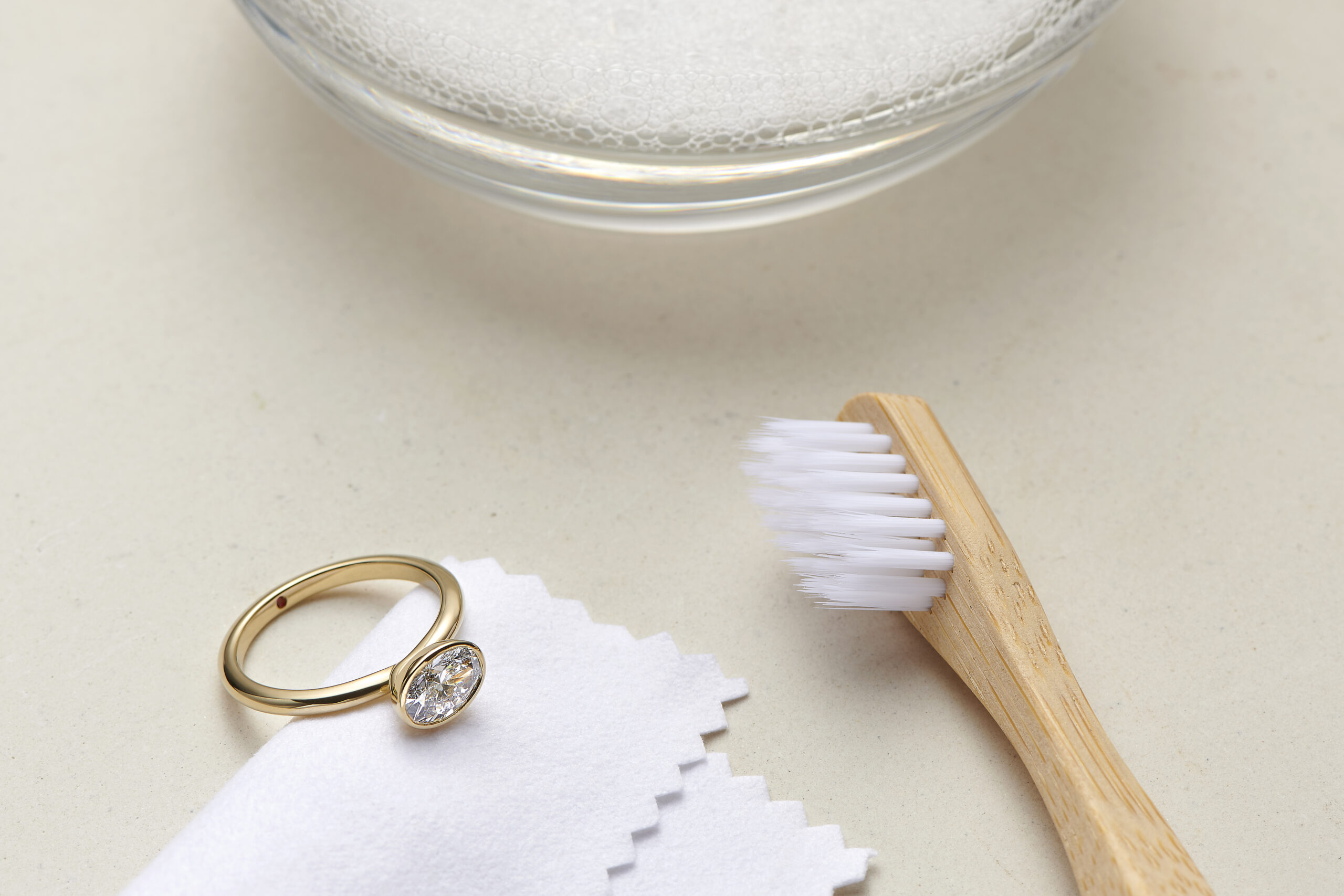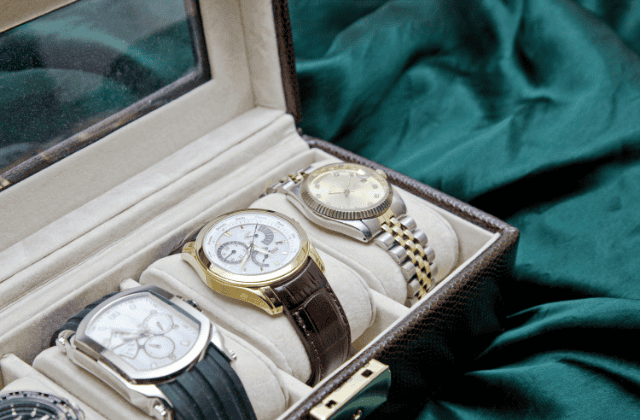Diamonds have long been symbols of purity, value, and brilliance. However, in my years as a diamontologist, I’ve found that the most fascinating diamonds often deviate from the transparent ideal that many of us hold dear.
Yes, I’m talking about the enigmatic and utterly captivating world of fancy color diamonds, also known as fancy diamonds.

You might be surprised to learn that in these extraordinary gems, color isn’t considered an imperfection; rather, it’s celebrated as a defining feature. As we venture into this realm, you’ll find that these colorful diamonds are not only scientifically captivating but also financially rewarding and aesthetically enchanting.
Prepare for a voyage that is as vibrant as the diamonds themselves, where each gem is a universe waiting to be explored. Whether you’re a novice gem enthusiast or a seasoned investor, this exploration will deepen your understanding and enrich your appreciation for these remarkable stones.
The Science Behind The Spectrum
I can’t help but marvel at the intricacies of how diamonds form and exhibit their unique characteristics. When it comes to fancy color diamonds, the phenomenon of coloration becomes even more riveting, bordering on alchemy. So, what precisely catapults these diamonds from mere geological formations into dazzling objets d’art?
The Why: The Essence of Existence
First and foremost, it’s important to recognize that color in diamonds isn’t a mere fluke or aberration. It’s the result of unique geological conditions that diverge from the formation of your quintessential white diamond. Consider each fancy color diamond a one-of-a-kind masterpiece shaped by the hands of Mother Earth.
Elemental Dance
Now, let’s delve into the nitty-gritty. The color in these diamonds is predominantly the result of trace elements interacting with the carbon atoms that make up the diamond. For example, a blue diamond contains trace amounts of boron, while a yellow diamond has a smattering of nitrogen. These elements sneak into the diamond’s crystal structure, altering its color in fascinating ways.
Light and Shadows
What happens next is a fascinating play of light. As light rays penetrate these diamonds, they are absorbed and reflected in unique patterns due to the presence of these traces. In simpler terms, these elements act like filters, allowing only certain colors in the visible spectrum to escape, thereby giving the diamond its unique hue.
Pressure Points
But trace elements and light aren’t the whole story. External conditions such as heat and pressure during the diamond’s formation can also influence its color. Immense pressure can cause deformations in the crystal structure, which in turn affects how the diamond interacts with light. Some diamonds even owe their colors to natural radiation from nearby rocks over millions of years!
Rarity Highlight
Did you know that red diamonds are the rarest of all? The exact conditions required to create a red diamond are still not entirely understood, making them an enigma even among experts. These gems are extremely rare that they almost never appear on the open market.
So, when you gaze at a fancy color diamond, you’re witnessing a complex interaction — between trace elements, light interactions, and a smattering of geological conditions — an interplay that took millions, if not billions, of years to perfect. Each color tells a story, a geological memoir written in the language of atoms and light. It’s a narrative that captures the essence of our Earth’s dynamic nature and serves as a tantalizing mystery for scientists and enthusiasts alike.
The Color Palette
While it’s easy to get caught in the mesmerizing spectrum of fancy color diamonds, each hue isn’t merely a stroke of chromatic genius. Rather, it’s a complex narrative of geological conditions, atomic substitutions, and even quirks of light and pressure. Understanding this intricate synthesis can enrich your appreciation for these gems beyond their visual splendor.
Fancy Pink and Red Diamonds

Pink diamonds are the darlings of the fancy color diamond world, often symbolizing love and romance. The rarer red diamonds, virtually unseen in most collections, are the epitome of passion and drama.
As you admire a fancy pink or a fancy red diamond, remember that you’re gazing at a stone that bears the marks of immense geological pressure that caused distortions in its crystal lattice. These red and pink diamonds are like bottled enigmas, each a dazzling question mark in the world of gemology.
Fancy Orange Diamonds

These are a radiant embodiment of a setting sun. These diamonds exist at the intersection of yellow and red, and their fiery hues are generally the result of nitrogen atoms in complex arrangements. Their rarity makes them a fascinating subject both for collectors and scientists alike.
Fancy Yellow Diamonds

The phrase, “not all that glitters is gold,” rings true; it’s the nitrogen atoms that replace carbon in the diamond’s structure, serving as a natural filter for blue light. But the spectrum of yellow is rich and diverse, including variations like the increasingly admired saffron diamonds. These particular gems, with their deeper, more intense shade, nestle comfortably between yellow and orange, offering a unique warmth that’s fast becoming a sought-after choice for those desiring a touch of the extraordinary.
The rich hues of fancy yellow diamonds, from the sunniest shades to the deep saffron variations, frequently grace engagement rings and summer jewelry collections, capturing joy and warmth in crystalline form.
Fancy Green Diamonds

Ah, the enchanting green diamonds — gems that literally glow with an inner light thanks to their exposure to natural radiation. When you behold a green diamond, you’re essentially looking at millions of years of geological history and radioactive interplay, a silent, luminescent testament to the dynamism of Earth’s interior.
Fancy Blue Diamonds

Blue diamonds, as you may recall, are the dazzling divas of the diamond world, as they are among the most sought-after and often fetch astronomical prices at auctions.
Beyond their obvious aesthetic allure, these gems have an electric conductivity due to the boron atoms in their lattice. Whether you’re drawn to the deep blues resembling a midnight sky or prefer lighter, teal-like hues, remember that you’re witnessing boron’s alchemical interaction with carbon.
Fancy Purple Diamonds
The elusive purple diamonds are a wonder of both color and scarcity. Their hues often result from the presence of hydrogen, or sometimes from complex deformations in their crystal lattice, much like their pink and red counterparts. These diamonds are captivating not just for their rarity but for the complexity of their formation.
Fancy Brown Diamonds

Brown is one of the most common fancy colors, and are often marketed under more tantalizing names like “chocolate,” “cinnamon,” or “cognac”. Brown diamonds, often dubbed “chocolate diamonds,” are widely available and generally more affordable. They might not capture the imagination like their colorful counterparts, but they have their own unique charm. These diamonds take you on a geological journey from the Earth’s mantle to the surface, with lattice defects causing their earthy hues.
Fancy Gray and Black Diamonds

Gray and black diamonds are the brooding artists of the fancy color diamond world. Their darker shades are often due to abundant inclusions like graphite, pyrite, or hematite. So, when you’re considering one of these darker gems, know that its hue is a rich tapestry of inclusions, each contributing to its unique personality.
They are versatile and more affordable, making them excellent choices for those seeking something distinctive without breaking the bank.
Fancy White Diamonds

Fancy white diamonds, often misunderstood as lacking color, are in fact an opalescent wonder. These diamonds contain a myriad of microscopic inclusions that scatter light in a way that makes them appear “white.” Their allure lies in their complex interaction with light, rendering them an ethereal beauty unlike any other.
Natural vs. Treated Color
When embarking upon the odyssey of acquiring a fancy colored diamond, one crucial fork in the road you’ll encounter is the choice between natural colored diamonds and treated diamonds. This is more than a superficial decision; it’s an ethical, aesthetic, and even financial one that calls for discernment. Understanding the divergence between the two can help you not only appreciate the gemstone’s history but also weigh its intrinsic value.
Naturally Colored Diamonds
Natural fancy color diamonds are the pièce de résistance of Earth’s gemological showcase. Each stone is an eloquent oration of geological processes, spanning myriad hues resulting from elemental interplays and environmental quirks.
Thus far I have just been referring to natural color diamonds. From what I’ve discussed so far, you’d have realized that when you opt for a natural color diamond, you’re embracing a gem that’s an untouched document of geological history, a color palette that has taken millions — if not billions — of years to manifest. The rarity and uniqueness of these diamonds often make them more valuable, both in monetary terms and as heirlooms or conversation pieces.
Treated Color
On the flip side, treated diamonds offer their own set of allure and advantages. These stones typically start as less desirable colors or even as clear diamonds, undergoing various treatments such as High-Temperature Annealing or Irradiation to enhance or entirely change their hue. While the resulting shades can be incredibly vivid, it’s important to understand that these have been achieved through human intervention.
Consequently, treated diamonds are generally less expensive than their natural counterparts, making them a more accessible option for many. However, because the color is induced, these diamonds often don’t hold their value in the same way that natural color diamonds do.
The Imperative of Disclosure
Whether you’re seduced by the enigmatic allure of a natural diamond or enticed by the vivid hues of a treated one, disclosure is non-negotiable. Reputable sellers will always provide certification that states whether a diamond’s color is natural or the result of treatment. This not only informs your purchasing decision but also impacts the stone’s valuation and resell worth.
That being said, there are indeed methods and signs one can look for to differentiate natural from treated diamonds.
Inclusions: Unplanned Beauty
Natural fancy colored diamonds may contain inclusions that have also been affected by the elements causing the diamond’s color. For example, a natural blue diamond might contain inclusions that have been tinted blue. Treated diamonds, especially those that started as clear, usually contain inclusions that remain unaffected by the color treatment.
Spectroscopy: A Glimpse into Elemental Composition
Spectroscopic analysis can reveal the presence of elements or alterations that are indicative of a treated diamond. For instance, elements like boron or nitrogen show up in the spectrum of natural blue and yellow diamonds, respectively. If these are absent, one could suspect the color to be artificially induced. However, this is a sophisticated technique often requiring professional equipment and expertise.
Color Zoning: Nature’s Imprint
Natural colored diamonds often display uneven color distribution or “color zoning” when viewed under a microscope. This is because of the erratic environment in which they are formed. Treated diamonds, on the other hand, often display uniform color, a result of controlled processes that aim for color evenness.
Response to UV Light: Fluorescent Tales
Natural and treated diamonds can behave differently under ultraviolet (UV) light, although this is not a foolproof method. Some natural diamonds fluoresce in a particular pattern or color that’s consistent with their natural origin, while treated diamonds might lack this characteristic or exhibit inconsistent patterns.
Price: The Financial Telltale
While not definitive, a significantly lower price point may be an indicator of a treated diamond, especially if it’s a rare diamond color and costly. However, bear in mind that other factors like cut, clarity, and carat weight also influence price.
It’s worth noting that some of these methods may require specialized equipment and trained eyes. If you’re not an expert, and especially if you’re considering a significant investment, it’s highly advisable to seek third-party certification and perhaps additional testing from reputable professionals.
The Art of Informed Decision-Making
Ultimately, the choice between natural and treated colored diamonds hinges on a constellation of factors, from budget constraints to ethical considerations, and from aesthetic preferences to investment potential. But as you mull over this choice, remember: whether shaped by the relentless hands of time or sculpted by human ingenuity, each diamond has a tale to tell. And it’s up to you to decide which story resonates with you the most.
The 4Cs of Grading Fancy Color Diamonds
Cut, color, clarity, and carat weight — these grading metrics are the universal language that enables us to describe, evaluate, and understand the rarity and quality of any diamond. But when it comes to fancy colored diamonds, the paradigm shifts subtly but significantly. The regular 4Cs take on an augmented role, and even their sequence rearranges itself in a dance that prioritizes color over all else. Allow me to dissect this intriguing interplay.
Color: The Pinnacle of Priority
Color takes center stage in the grading of fancy colored diamonds; it’s the marquee under which all other attributes fall. While in colorless diamonds, the absence of color is prized, here, the depth, hue, and saturation of color become the paramount factors determining value.
Grading laboratories use terms such as “Fancy Light,” “Fancy,” “Fancy Intense,” and “Fancy Vivid” to describe the spectrum of saturation. However, unlike traditional diamonds, secondary colors — or overtones — also come into play, adding further complexity to the grading process.

Clarity: The Narrative in Nuance
While still an important factor, clarity often takes a back seat to color in the world of fancy diamonds. Inclusions that might be considered imperfections in colorless diamonds can sometimes even intensify the color and uniqueness of a fancy color diamond. Though, as with any diamond, inclusions that risk the stone’s structural integrity can significantly detract from its value.
Cut: The Artisan’s Canvas
In colorless diamonds, the cut aims to maximize brilliance — the return of white light to the viewer’s eye. But with fancy color diamonds, the cut’s primary purpose is to accentuate color.
Factors such as depth and table percentages can be manipulated to deepen or lighten the stone’s color, making the skill of the cutter critically important. The shape of the diamond also plays into this; for instance, radiant and cushion cuts are often favored for their ability to display color vividly.
Carat Weight: The Balancing Scale
Lastly, but far from least, is carat weight. Larger diamonds are rarer, and when combined with a rich, intense color, they can reach astronomical prices. However, carat weight is considered only after assessing the color, clarity, and cut of the diamond. It’s like the final flourish on an already intricate masterpiece.
It’s vital to appreciate that while the 4Cs offer a comprehensive understanding of a diamond’s quality and value, their interaction in the realm of fancy color diamonds is akin to a finely choreographed ballet, with each attribute playing a pivotal role, but none as commanding as color.
As you venture into this vibrant world, arm yourself with the knowledge of these grading criteria, but also let your eyes and soul guide you. After all, the diamond you choose will not merely be an asset; it will be an extension of your own palette, a color in the mosaic of your life’s experiences.
Market Trends
In the ever-shifting landscape of gemstones, fancy colored diamonds have carved out a fascinating niche, one that is both reflective of contemporary cultural currents and deeply tied to the mysteries of geology. The market for these colorful gems has been an effervescent blend of age-old allure and the avant-garde, with several trends capturing the collective imagination.
The Rise of the Pink
Pink diamonds, especially those from the now-closed Argyle Mine in Australia, have seen an upsurge in value and demand. These romantic hues make a pink diamond a gorgeous option for an engagement ring center stone, and have not only captivated brides-to-be but have also intrigued investors, as their scarcity increases.
The Allure of the Unusual
Brown and gray diamonds, once relegated to industrial uses, have been rebranded as “chocolate” and “salt and pepper” diamonds, undergoing a renaissance in the eyes of designers and consumers. Their more accessible price points have democratized the luxury of owning a fancy colored diamond.
Sustainability and Provenance
In tune with global eco-consciousness, diamonds with clear, ethical origins are experiencing growing appeal. Blockchain-enabled traceability and initiatives like the Kimberley Process have given consumers more confidence in their choices.
Customization: The Personal Palette
An increasing number of buyers are veering away from the traditional and towards the customized. The unique nature of each fancy color diamond lends itself wonderfully to personalized settings and designs, driving a trend of individualized, bespoke creations.
Ethical Considerations: Mining the Moral Landscape
Owning a fancy colored diamond is an enchanting experience, but it carries with it ethical imperatives that cannot and should not be ignored. The market has sometimes been shadowed by the specters of conflict diamonds, ecological devastation, and unfair labor practices. But there’s an increasing shift toward responsible sourcing.
Kimberley Process: The Baseline
Make sure your diamond comes from a country that adheres to the Kimberley Process, a certification scheme that seeks to stem the flow of conflict diamonds.
Beyond Kimberley: Fair Trade and Artisanal Mines
Though the Kimberley Process is a starting point, many argue it’s not enough. Brands that source from Fair Trade mines or artisanal miners ensure a higher level of ethical conduct, from labor conditions to environmental impact.
Lab-Grown: The Ethical Alternative?
Another burgeoning sector is lab-grown fancy color diamonds. Created in controlled environments, these stones can offer a more ethical and often less expensive alternative to natural diamonds, although they carry their own environmental costs in energy consumption.
Transparent Sourcing: Know Your Diamond’s Story
Increasingly, brands offer detailed “biographies” of their diamonds, tracing the journey from mine to market. Opt for brands that provide this level of transparency, empowering you to make an informed ethical choice.
In the final analysis, the world of fancy color diamonds is as complex and multifaceted as the gems themselves. Navigating it with both a discerning eye and an ethical compass makes the experience not just a material investment but a moral and aesthetic one—a vibrant chapter in your life’s narrative that aligns with your values and enriches your soul.
Buying Fancy Color Diamonds
When it comes to buying colored diamonds, the kaleidoscopic array of options can dazzle even the most seasoned aficionado. The labyrinthine nature of the diamond market, compounded by the individualistic character of each colorful gem, makes this endeavor one that calls for discerning acumen and nuanced taste. Here, I shall illuminate some guideposts to help you navigate this vivid bazaar with confidence and flair.
Where to Buy: The Confluence of Repute and Transparency
The provenance of your diamond isn’t merely about geological origins; it’s also about the integrity of the marketplace. Your initial quest is to find a reputable dealer — be it a renowned international brand or a local jeweler of impeccable standing. Always seek a provider who offers third-party certification, preferably from recognized institutions like the Gemological Institute of America (GIA) or the International Gemological Institute (IGI).
Buying Tips: The Symphony of Strategy
- Request Certification: As previously emphasized, always insist on a certificate. This document is your diamond’s biography and its guarantee of authenticity.
- Embrace the 4Cs: This renowned framework isn’t merely academic; it’s a practical blueprint for evaluating your fancy color diamond. But remember, color reigns supreme here.
- Mind the Budget: While chasing the captivating allure of a richly hued stone, don’t lose sight of your financial orbit. Often, opting for a smaller carat size but better color intensity offers more visual delight and lasting value.
- Invest in Appraisal: Especially for high-value purchases, an independent appraisal provides an additional layer of verification and peace of mind.
- Examine the Setting: A diamond’s setting can either enhance or diminish its color. While white gold and platinum settings offer neutrality, a yellow or rose gold setting can interact with your diamond’s hue in intriguing ways.
- Compare and Contrast: Take your time to look at multiple diamonds in various lighting conditions. The interplay of light and material is the essence of a diamond’s splendor.
- Ask About Treatment: If you’re okay with a treated stone, they can provide excellent value. But always make sure the treatment is disclosed and reflected in the price.
- Lifetime Guarantees and Return Policies: Though often overlooked, a good return policy and a lifetime guarantee can provide significant long-term value and assurance.
Invest in What Resonates
Ultimately, as you stand on the precipice of this major investment — or perhaps sentimental gift — let your instincts share the stage with your intellect. You’re not just buying a rock; you’re investing in a piece of Earth’s legacy and an emblem of your own tastes and values.
So proceed with diligence, arm yourself with knowledge, and let your eyes feast on the chromatic symphony before you. With astuteness as your compass and passion as your guide, the fancy colored diamond that you choose will be more than a jewel; it will be a testament to your own multifaceted journey through life’s vibrant palette.
FAQs on Fancy Colored Diamonds
Can fancy colored diamonds fade over time?
No, the color of natural fancy colored diamonds will not fade over time. These stones have undergone geological processes for millions of years that have locked their color into their structure. However, treated or enhanced color diamonds may not have the same permanence.
Are fancy color diamonds suitable for daily wear?
While diamonds are renowned for their hardness, fancy color diamonds can be sensitive to light and chemicals, depending on their color origin. For example, green diamonds that owe their color to natural radiation can be sensitive to light exposure.
Do fancy color diamonds fluoresce?
Some fancy color diamonds do exhibit fluorescence, but this is generally considered a secondary characteristic and does not significantly impact the diamond’s value unless the fluorescence is so strong that it affects the diamond’s overall appearance.
What impact does the cut have on a fancy colored diamond?
The cut is crucial in determining how a fancy colored diamond reflects light and, therefore, how vibrant the color appears. Some cuts, like radiant and cushion cuts, are known to intensify the diamond’s natural color.
Is it possible for a diamond to have more than one fancy color?
Yes, diamonds can exhibit a primary color and one or more secondary or “overtones” of color. These are known as multi-colored or multi-hued diamonds and can be quite rare and valuable, depending on the combination of colors.
How do I care for and clean my fancy colored diamond?
Like all diamonds, fancy color diamonds should be cleaned carefully. Avoid using harsh chemicals, and opt for mild soap and water, or a specialized diamond cleaner. It’s advisable to consult the jeweler for care tips specific to your diamond’s color and setting.
Are fancy diamonds a good choice for engagement rings?
Fancy color diamonds offer a unique and personal alternative to the more traditional colorless diamond engagement rings. They’re not only strikingly beautiful but also offer a symbol of uniqueness and individuality. However, be mindful of the durability and daily wear considerations of the specific color you choose for your engagement ring. Also, it’s essential to know your partner’s taste, as a fancy color diamond makes a bold statement that might not be everyone’s cup of tea.
A Spectrum of Options
As you ponder your journey through the varicolored landscape of the gemological wonders that are colored diamonds, know that each hue offers not just a unique visual experience, but a cosmic narrative etched in time and pressure. Don’t merely consider them as acquisitions, but as heirlooms of the Earth, each with a story yearning to be a part of your own.
Whether you’re a first-time buyer, a collector, or someone planning to pop the big question, venture boldly. For in the realm of fancy diamonds, audacity meets beauty, and the result is nothing short of breathtaking.





